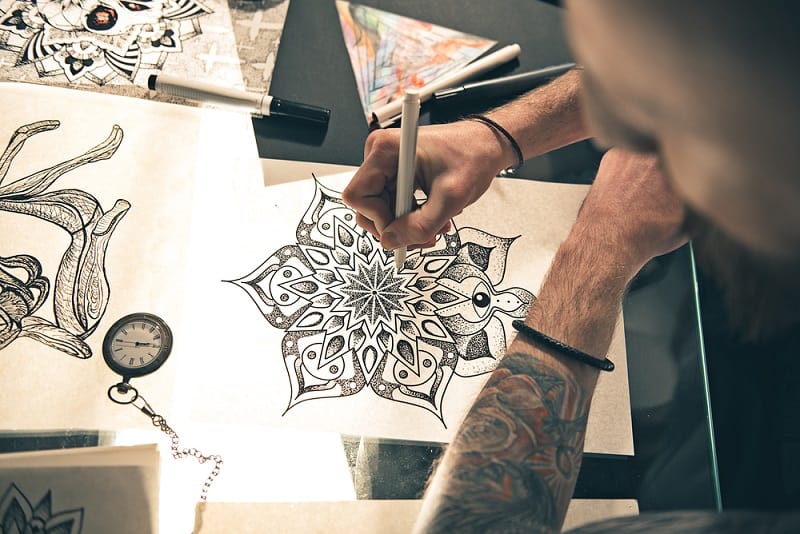The tattoo design process is an important and intricate journey that transforms creative ideas into lifelong works of art on a human canvas. Tattoo artists take great care in creating unique designs that resonate with their clients, reflecting their personalities, stories and emotions. From initial concept to final execution, let's explore the steps involved in this exciting process:
Client Consultation: It all starts with a consultation with the client, where the tattoo artist sits down with the individual to understand their vision. This conversation involves a discussion of the client's preferences, desired style, size, location and any personal tattoo meaning or symbolism they wish to incorporate into the tattoo.
Drawing and Conceptualisation: Backed with insights from the consultation, the artist begins drawing various design concepts. They may draw by hand or use digital tools to visualize ideas. This stage involves exploring compositions, elements and artistic styles that blend with the client's preferences and the artist's expertise.

Feedback and Revision: Once the artist has a number of design options, they present them to the client for feedback. This interactive process allows the client to make suggestions, provide feedback and request revisions until they are completely satisfied with the design.
Design Finalisation: After several rounds of feedback and refinement, the client and artist agree on the final design. It is important to ensure that both parties are in agreement before proceeding with the actual tattoo design process.
Stencil Preparation: With the final design in hand, the artist prepares the stencil. The stencil serves as the transfer outline for the tattoo, providing a guide for the artist during the engraving process. The artist carefully places the stencil on the client's skin to ensure proper placement.
Tattooing: With the stencil placed, the artist begins the tattooing process. Using specialised tattoo machines or traditional hand-piercing techniques, they deftly apply ink to the dermis layer of the skin. This process requires precision, attention to detail and artistic dexterity to bring the design to life.
Coloring and Shading: Depending on the design, artists can incorporate various colors or shading techniques to add depth and dimension to the tattoo. Experienced artists understand how different pigments interact with different skin types to achieve the desired effect.

Post-Tattoo Care and Healing: Once the tattoo is complete, the artist provides the client with post-tattoo care instructions to ensure proper healing. Following these guidelines is important to maintain the brightness and longevity of the tattoo.
Client Satisfaction: The end of the tattoo process marks the beginning of a lifelong bond between the client and the artwork. A skilled tattoo artist takes pride in ensuring their client's satisfaction, knowing that his work will become a permanent part of the individual's life story.
In conclusion, the tattoo design process is a collaborative and creative journey that involves clear communication, artistic flair and technical expertise. From the initial idea to the final execution, skilled tattoo artists work diligently to create a unique and meaningful piece of body art that lasts forever.


